Rules for cycling on the road
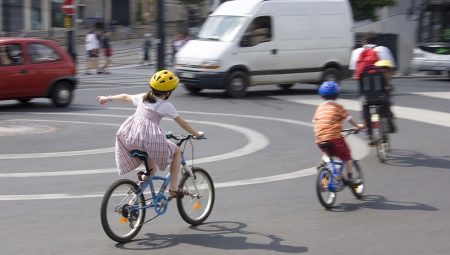
Many residents of megacities understand that a bicycle is the most successful alternative to a car and public transport. Firstly, there is no need to get stuck in traffic jams, and secondly, the family budget is significantly saved.
In the recent past, when there were very few cars on the road, bicycles were the best way to get around. They were ridden by both adults and children. In small towns, villages and villages, two-wheeled vehicles are indispensable to this day.
In the modern world, a bicycle is a fashionable and useful means of transport. A cyclist sitting on his "iron horse" is considered a road user, which means he must know traffic rules and not violate them.
But unfortunately, not every owner of a two-wheeled structure is aware of this fact, which is why he exposes himself, the drivers of other vehicles and pedestrians to danger.
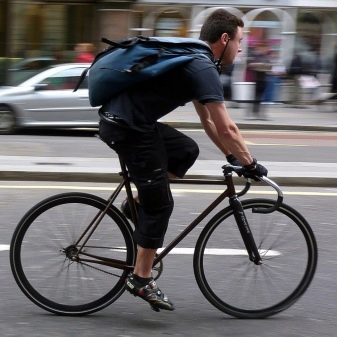

Requirements for the technical equipment of cycling
Unfortunately, most motorists believe that cyclists should not use the road. This is due to the lack of appropriate protective uniforms among the drivers of two-wheeled vehicles and their failure to comply with the rules of the road on the road.
In fact, a bicycle is a real vehicle that can be used to travel on the road. A person who gets behind the wheel of a bicycle automatically becomes a participant in road traffic, which means that he must comply with traffic rules.
It is important for a cyclist to remember that his "iron horse" must meet the requirements of the technical condition. Before leaving, it is very important to check the condition of the wheels, to make sure that the brake system and sound signals are in good working order. Particular attention should be paid to securing the handlebar and saddle.
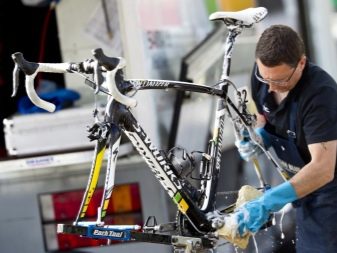
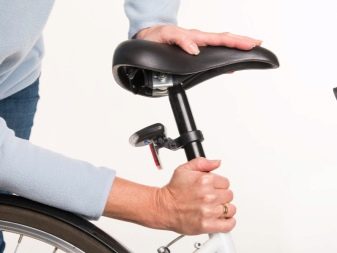
It is important to check the operation of the lighting equipment. Especially if the trip is planned in the evening. There must be a white center light and headlights on the front of the bike. On the back there is a red light and reflectors.
The bicycle driver is strictly forbidden to move along the street at night with faulty or completely absent lighting devices. The same goes for defective bike steering and brake.
Modern bicycle models have a small motor with a power of up to 0.25 kW with an automatic shutdown system when the cyclist picks up a high speed. Such modifications of two-wheeled vehicles are equated to classic models of bicycles and are allowed to move on the roads.


Age restrictions
Few were interested in information about age restrictions for cyclists. According to the majority, everyone can drive a two-wheeled vehicle - both a child and an adult. In principle, it is so. Initially, children sit on tricycles, and when they are a little older, they change to two-wheeled bicycles. Respectively, technical characteristics of cycling with each stage of growing up of children increase, and it becomes uninteresting to ride in specially designated places.
In this regard, there is a subsection in the traffic rules, which clearly states that a cyclist under the age of 14 has no right to ride on the carriageway and the side of the road. Children between the ages of 7-14 should only use the pedestrian zone and cycle paths. Children under 7 years old are allowed to move only in pedestrian areas under the supervision of adults.
In addition, cycling on the road involves not only an age limit, but also knowledge of the rules of the road.
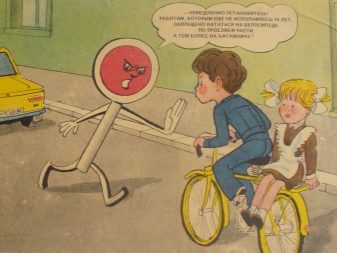

Do i need a driver's license?
Despite the fact that the cyclist is a full-fledged participant in the road traffic, they are not granted a license. At the same time, many cycling enthusiasts have a driver's license to drive cars, but there is no need to take a document with you to travel around the city on a bicycle.
Actually, the presence of a driver's license indicates the passage of a specialized driving school, where the rules of behavior on the road for drivers, pedestrians, cyclists are studied (and the latter have a unique ability to change their own status in a split second). In simple terms, while a person is on a bicycle, he is a driver. As soon as he got off the bike and took him alongside, he became a pedestrian.
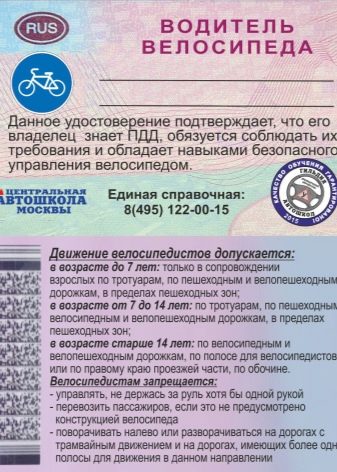
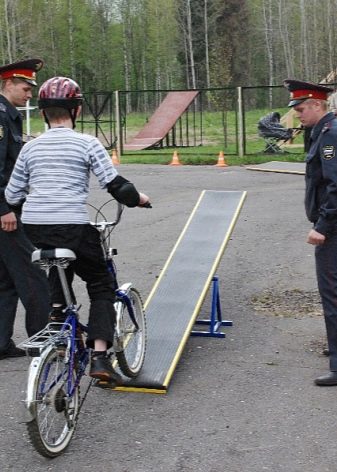
Where and how can you go?
Many drivers run the risk of getting into an accident with the participation of a cyclist every day, due to the fact that the latter does not know the rules of the road. And to tell the truth, car drivers do not always remember where and how a cyclist can move.
To resolve this dispute, it is necessary to recall the set of traffic rules, where it is clearly and clearly stated that the cyclist is allowed to move on the carriageway to the right of the passing vehicles. We are talking about the edge of the road or in general about the right lane in multi-lane traffic.
In addition, the traffic rules determine where a cyclist who has reached the age of 14 should move:
- bike paths, cycle paths, and bicycle lanes;
- on the carriageway, the cyclist must ride on the right side of the road;
- the bike rider is allowed to ride on the side of the road;
- on the pedestrian part.
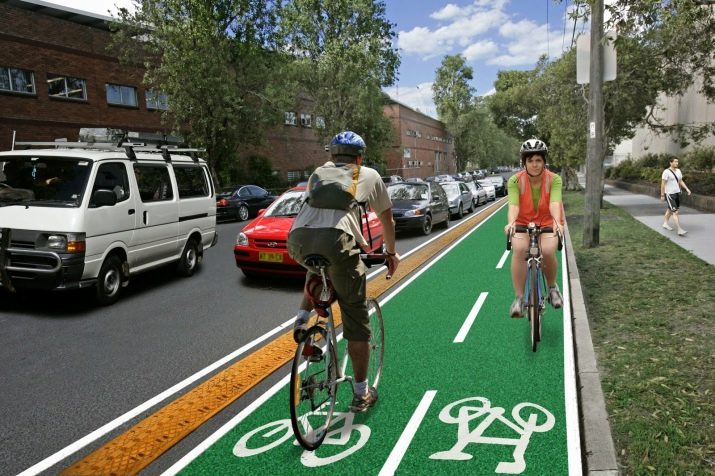
It is important to note that the points presented in the order shown apply in the absence of the previous ones. For example, a cyclist may ride on the side of the road if there is no cycle path and there is no way to ride on the road. But, like any rules, traffic rules have a small list of exceptions:
- a cyclist can move on the carriageway if the width of the vehicle and a possible trailer for it is more than 1 m;
- cyclists can ride along the road in a column.
There are times when a cyclist has a breakdown of the "iron horse" or he himself gets injured. In such cases, it is important for the injured driver to behave correctly on the road. First, a cyclist dismounted from a bicycle automatically turns into a pedestrian. Pedestrians, on the other hand, when driving on the road outside settlements, must go against the direction of the car.
However, anyone rolling a bicycle next to them must move in the direction of other vehicles.
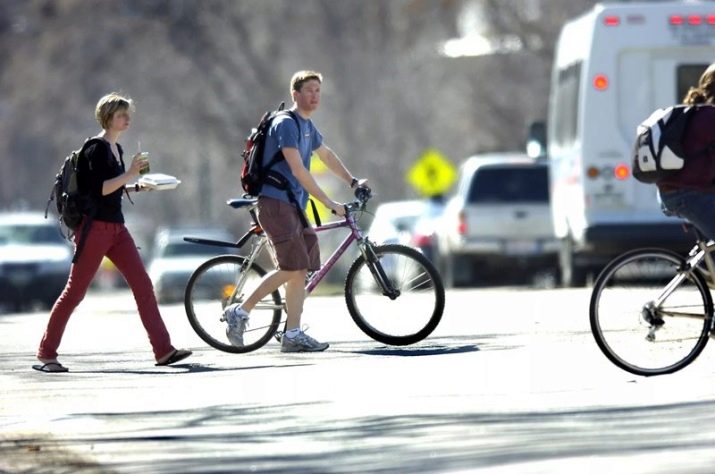
Secondly, in order to get to the intended goal for the cyclist, it is extremely important to correctly build the route. To avoid accidents, it is preferable to choose roads with a low traffic rate. Of course, you can hit the road along public highways, for example, along the Moscow Ring Road or along the highway, if the destination is a remote village. But even keeping to the right of the general flow of cars, there is a high probability of getting into an accident.
With children and adolescents under the age of 14, the issue of behavior on the roadway is not even raised. They can ride on sidewalks, pedestrian and cycle lanes. Kids are required to ride their vehicles only under the supervision of their parents. But even children, while driving, must keep an eye on the road ahead. They shouldn't be a hindrance to other people.
Parents are advised to teach the child in advance to the behavior of the driver of a two-wheeled vehicle and, first of all, to explain that the location of his "iron horse" should be on the right side.

By motorway
Most cyclists, knowing that they can move on the carriageway, wedge themselves into car traffic, not paying attention to the road value. For this reason, many emergencies arise, where the driver of a passenger car is most often recognized as the culprit. But there are times when the blame for an accident falls on the shoulders of the cyclist. In this case, it is a question of a cyclist driving on a motorway.
According to the approved traffic rules, the cyclist is forbidden to move on the carriageway, where the signs "Road for cars" are displayed and on highways. Otherwise, the cyclist may receive an administrative fine.
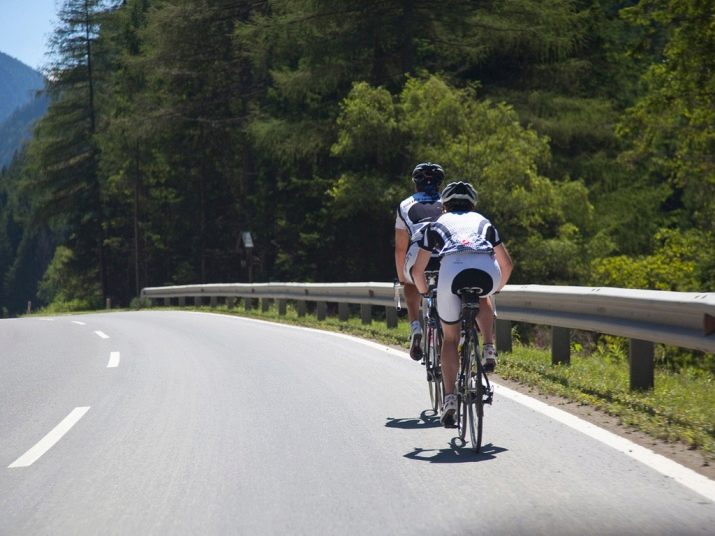
By the side
If the bike meets the technical requirements, and the driver himself has reached the age of 14, he is allowed to drive onto the carriageway, but only move along the side of the road. Keeping to the right of the general flow of cars, the cyclist will be able to move forward calmly, while not interfering with other road users.
But that doesn't mean that the owner of the bicycle should keep as close to the curb as possible or ride along the very edge of the asphalt road. And, most importantly, don't be nervous. Some hurrying motorists start honking to leave the road and let them pass. The cyclist in this situation should still keep to the right. The road markings are designed with sufficient margin so that it is convenient for all vehicles to move forward.
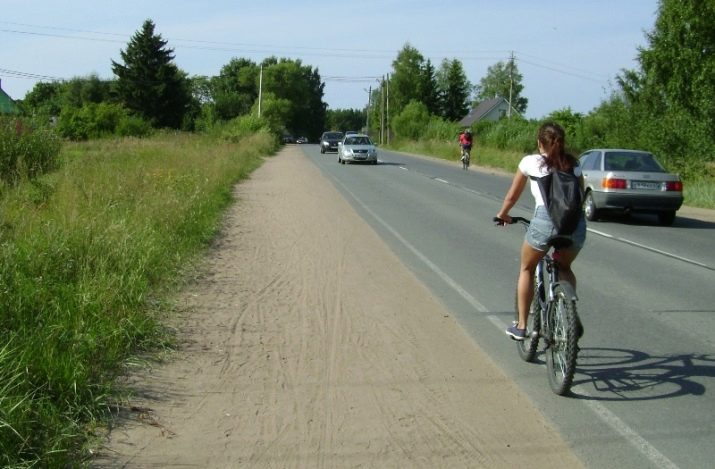
On a pedestrian crossing
As mentioned earlier, the cyclist is a full-fledged road user. But as soon as he gets off his "iron horse" - automatically turns into a pedestrian.
If the cyclist needs to be on the other side of the road, he is obliged to get to the pedestrian crossing, get off his transport and on foot, rolling a bicycle next to him, cross the road. It is strictly forbidden to cross the road while sitting in the saddle. Getting off the bike, a person automatically changes their legal status and gets pedestrian priority.
In the event that a cyclist, while driving through a pedestrian crossing, gets into an accident, the driver of the hitting vehicle can safely call the traffic police to draw up a protocol and identify the degree of guilt of each participant in the road accident.
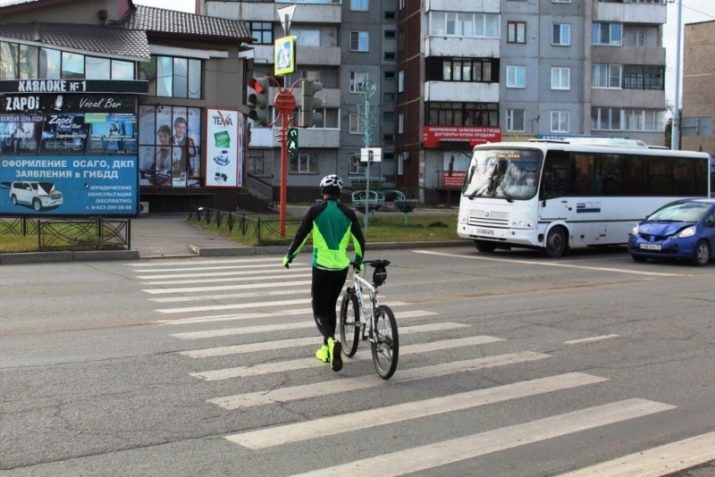
What is prohibited?
A cyclist, before getting behind the wheel of a two-wheeled vehicle, must familiarize himself with the rules of the road and learn how to apply them in practice. But even experienced cyclists, finding themselves on the same road with the stream of cars, commit traffic violations.
The most common offenses for cyclists are oncoming traffic and cycling on pedestrian crossings. In such situations, the cyclist himself does not understand that while driving a two-wheeled vehicle, he is a driver, not a pedestrian.
Both of the presented traffic violations are extremely dangerous and can lead to the death of the bicycle driver. Motorists, according to the rules of the road, should only let pedestrians pass; the riding cyclist has nothing to do with them.
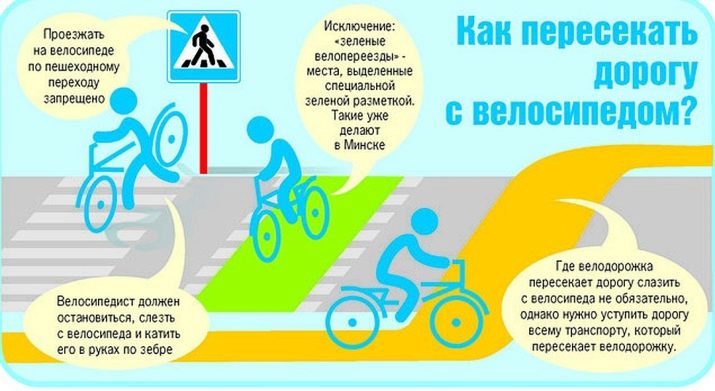
Some cyclists can afford to drive a two-wheeled vehicle while intoxicated. Doing this is strictly prohibited. Of course, It will not work to take away the driver's license from the owner of the bicycle, but the traffic police can issue an administrative fine.
In addition, the cyclist is prohibited from making U-turns and turning left if the road is designed for 2 lanes or more. The same goes for the availability of tram lines. Cyclists may not carry passengers unless the bike is designed to accommodate additional space. Traffic rules prohibit cyclists from transporting goods, the dimensions of which protrude from different sides by more than 50 cm.
Cyclists, like other road users, are prohibited from talking on the phone while riding. Do not engage in any other activity in which the driver must completely release the steering.
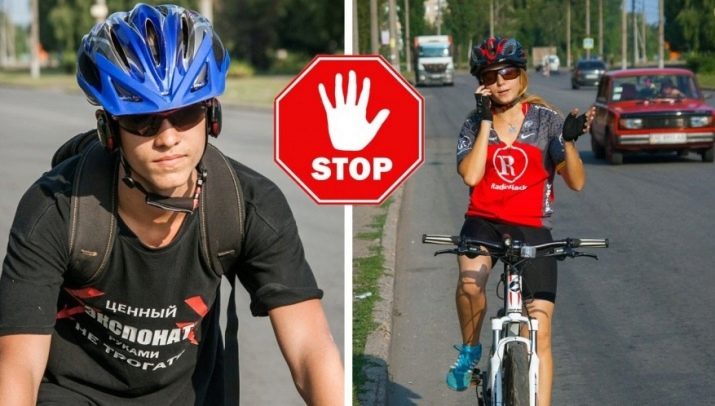
Among other things, drivers of two-wheeled vehicles rarely pay attention to traffic signs, for example, "brick" or "traffic on bicycles is prohibited."
Penalties for rule violations
To find out how empty a cyclist's wallet will be for a fine issued by a traffic police officer, you can use the latest version of the publication of traffic rules. Almost at the end of the book there is a section with a transcript of the incriminated article and the amount of administrative penalties. The minimum fine is RUB 800. At the same time, the monetary punishment is calculated only for minor offenses. If there was damage to private property or harm to the health of other road users, the amount of the issued fine increases several times.
Traffic police officers punish cyclists caught driving a bicycle while intoxicated much more severely. The amount of the fine ranges from 1,000 to 1,500 rubles. Of course, such a size of an administrative offense cannot be called large, but, according to the traffic police, it is very effective.
Every year the amount of payment for administrative offenses increases depending on the rise of 1 MCI. A couple of years ago, the minimum fine was some 200 rubles, and for serious offenses a cyclist had to pay 500 rubles. And in most cases the driver of the bicycle managed to get off with a warning from the traffic police. Today it is not so easy to avoid punishment.
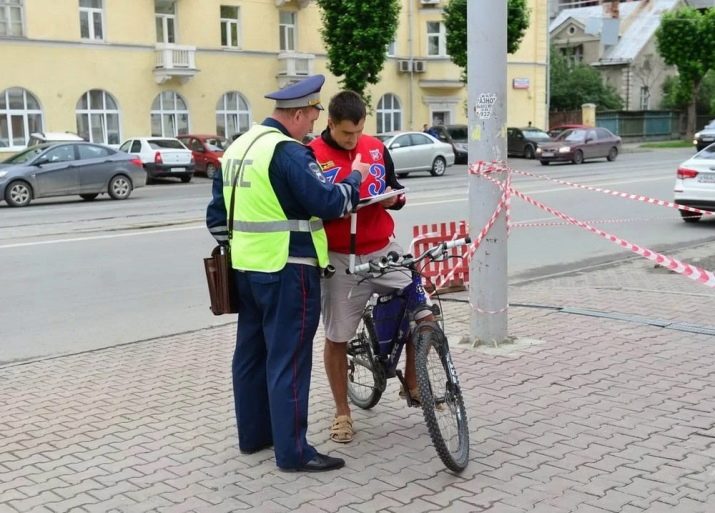
For information on how to properly move cyclists in the city, see below.





